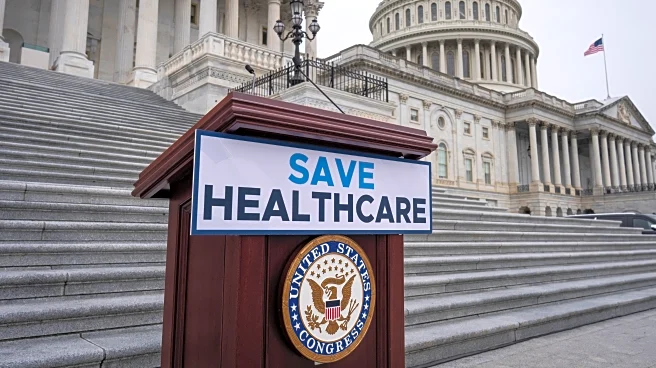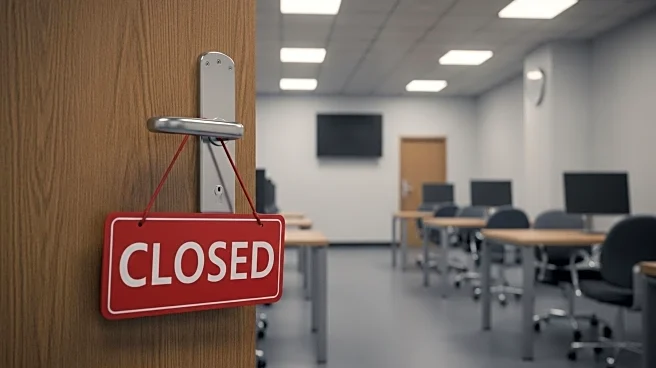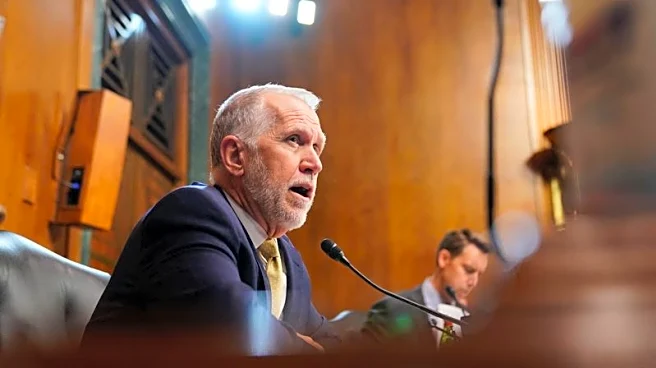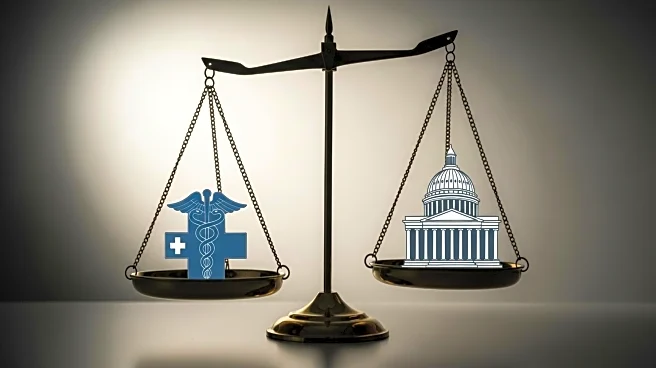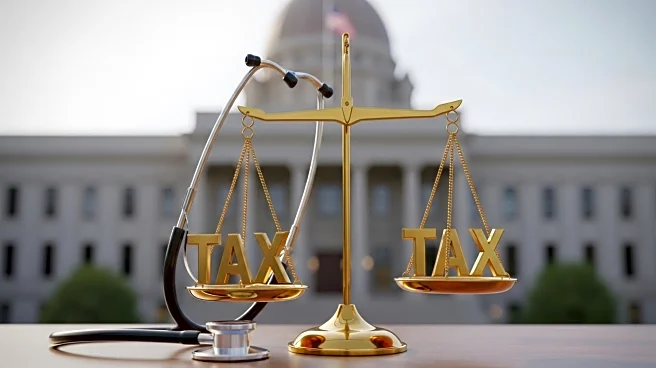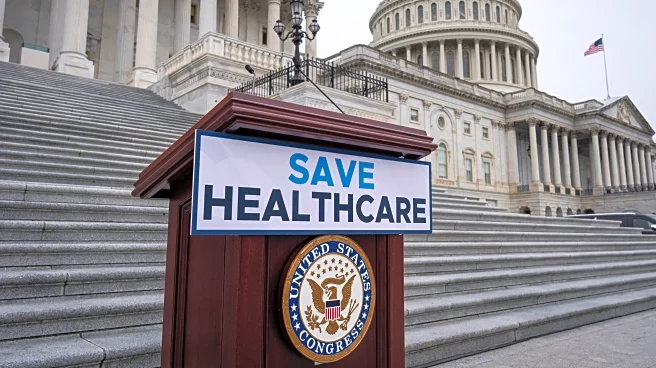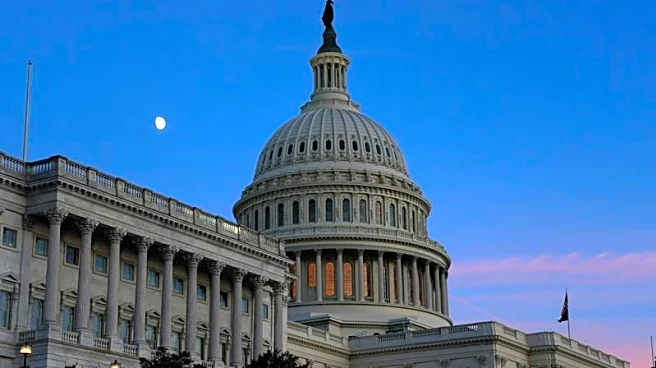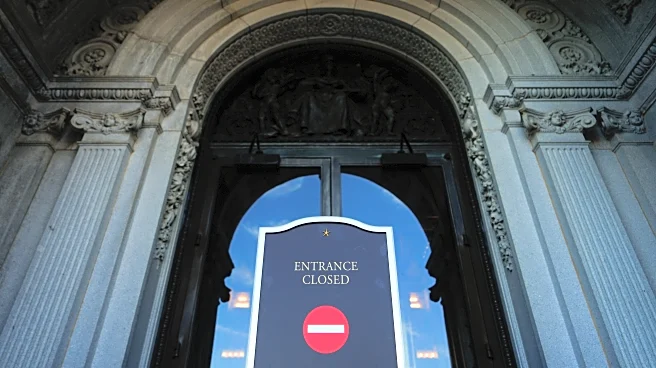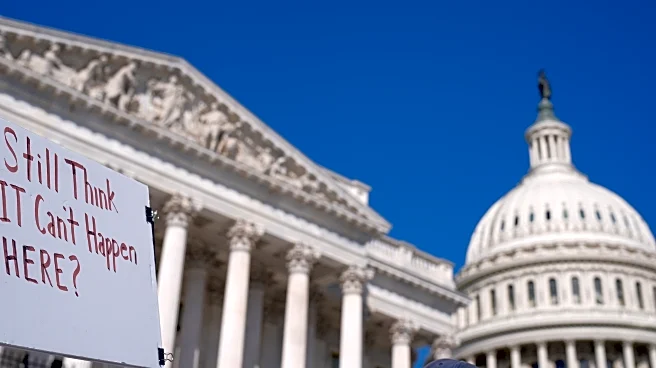What's Happening?
The federal government has entered its fifth day of partial shutdown as of October 5, 2025, following Congress's inability to reach a funding agreement. President Trump is urging Democrats to support the Republican plan to restore government funding, but Senate leadership has yet to secure the necessary 60 votes to pass the bill. As a result, approximately 2 million federal workers are facing suspended pay, with around 750,000 ordered not to work, while essential personnel such as troops and air traffic controllers are required to work without pay. The shutdown ranks as the fifth longest in U.S. history, with Senate Democrats demanding a permanent extension of federal subsidies for health insurance under the Affordable Care Act, a point of contention with Republicans who believe it should be addressed separately.
Why It's Important?
The ongoing government shutdown has significant implications for various sectors and millions of Americans. Essential services like Social Security, Medicare, and Medicaid continue, but with reduced staffing and paused marketing efforts. Food aid programs such as SNAP and WIC are operating as funds allow, while the U.S. Postal Service remains unaffected due to its independent funding structure. The shutdown impacts air travel, with air traffic controllers and TSA employees working without pay, and military personnel also remaining on duty without compensation. Law enforcement and border security operations continue, highlighting the critical nature of these services despite the funding impasse. The shutdown underscores the political divide over healthcare funding and its broader impact on government operations.
What's Next?
The shutdown is expected to persist until at least October 6, unless a funding agreement is reached. The Senate's inability to pass the bill reflects ongoing political tensions, particularly regarding healthcare subsidies. The continuation of essential services is contingent on available funds, and prolonged shutdown could exacerbate financial strain on federal workers and disrupt public services. Stakeholders, including political leaders and affected workers, are likely to increase pressure on Congress to resolve the impasse. The situation may prompt further negotiations and potential compromises to address the healthcare funding issue separately, aiming to restore government operations and alleviate the impact on federal employees and services.
Beyond the Headlines
The shutdown highlights deeper issues within U.S. political dynamics, particularly the challenges in reaching bipartisan agreements on critical funding matters. The impasse over healthcare subsidies reflects broader debates on public policy priorities and fiscal responsibility. The situation raises ethical concerns about the treatment of federal workers required to work without pay and the potential long-term effects on government efficiency and public trust. The shutdown may also influence future legislative strategies and negotiations, as stakeholders seek to prevent similar occurrences and address underlying political divisions.

